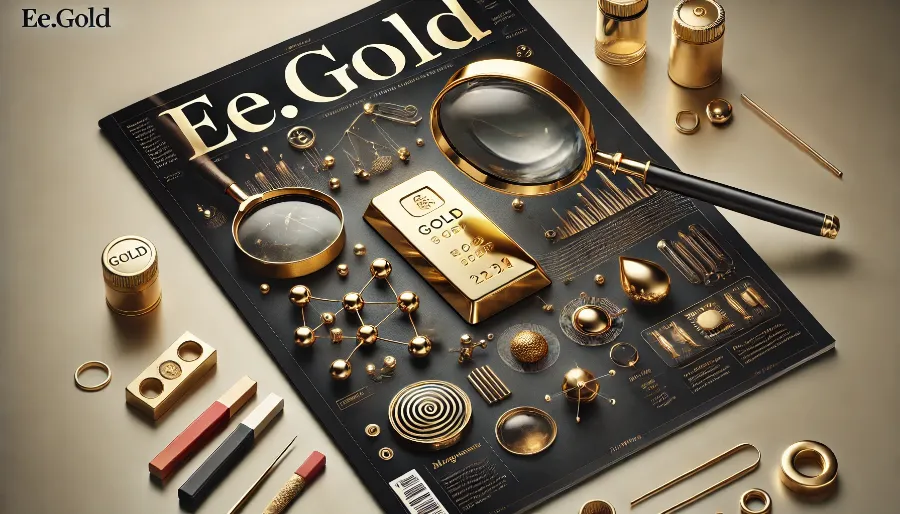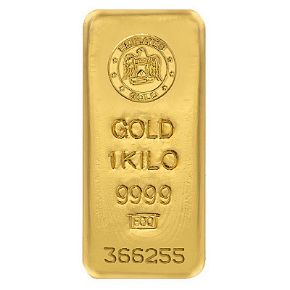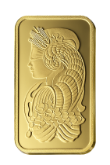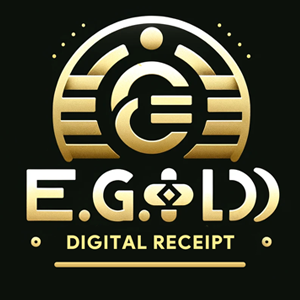
Why Testing Gold at Home is Important
Gold has always been a sought-after precious metal, but with its value comes the risk of counterfeits. Whether you’ve recently purchased gold jewelry, inherited gold coins, or are simply curious about the authenticity of your items, testing gold at home is a practical and cost-effective solution. This guide explores five reliable methods that you can use to ensure your gold is real.
Methods for Testing Gold at Home
1. The Float Test
The float test is one of the simplest ways to test gold at home.
What You Need:
- A clear glass or bowl of water
- The gold item
Steps:
- Fill the glass or bowl with water.
- Drop the gold item into the water.
Results:
- Real Gold: Sinks to the bottom immediately due to its high density.
- Fake Gold: May float or hover, especially if it contains lighter metals.
2. The Magnet Test
Gold is non-magnetic, making this a quick test to rule out counterfeit items.
What You Need:
- A strong magnet
Steps:
- Place the magnet near the gold item.
- Observe if the item is attracted to the magnet.
Results:
- Real Gold: Shows no attraction to the magnet.
- Fake Gold: May stick or move toward the magnet if it contains magnetic metals like iron or nickel.
3. The Scratch Test
The scratch test checks for underlying materials beneath a gold coating.
What You Need:
- An unglazed ceramic plate or tile
Steps:
- Gently rub the gold item against the ceramic plate.
- Check the color of the streak left behind.
Results:
- Real Gold: Leaves a golden streak.
- Fake Gold: Leaves a black or gray streak.
4. The Acid Test
Acid testing kits are widely available and offer accurate results for determining gold purity.
What You Need:
- A gold testing acid kit (available online or at jewelry stores)
- Protective gloves and goggles
Steps:
- Scratch the gold item lightly to expose an inner layer.
- Apply a drop of the acid to the exposed area.
- Observe the reaction.
Results:
- Real Gold: No reaction or slight discoloration, depending on the karat level.
- Fake Gold: Bubbling, fizzing, or a change in color indicates non-gold materials.
5. The Vinegar Test
Vinegar can help identify fake gold through its reaction with base metals.
What You Need:
- White vinegar
- A dropper
Steps:
- Apply a drop of vinegar to the gold item.
- Wait for a few minutes and observe.
Results:
- Real Gold: Shows no reaction.
- Fake Gold: May discolor, tarnish, or bubble due to the reactivity of base metals.
Additional Tips for Accurate Home Testing
Test in a Well-Lit Area
Good lighting helps you observe color changes or streaks more clearly.
Choose Discreet Test Areas
If testing jewelry, use a hidden spot to avoid visible marks or damage.
Combine Multiple Methods
For the most accurate results, use a combination of tests, such as the float test and magnet test, to verify your findings.
Use Proper Safety Equipment
For tests involving chemicals, wear gloves and goggles to protect your skin and eyes.
When to Seek Professional Testing
While home tests are convenient, they have limitations. If you’re dealing with high-value items or inconclusive results, consult a professional. Jewelers, pawnshops, and assay labs use advanced techniques like X-ray fluorescence (XRF) and spectrometry for precise gold analysis.
FAQs About Testing Gold at Home
1. Can I test gold without damaging it?
Yes, non-invasive methods like the float and magnet tests do not damage gold items.
2. Are acid tests safe to use?
Acid tests are safe when used with protective gear and in a well-ventilated area.
3. Does real gold tarnish?
Pure gold (24-karat) does not tarnish, but lower-karat gold with alloys may.
4. Can I test gold-plated items?
Yes, the scratch test and acid test can reveal the base metal beneath the plating.
5. Is vinegar a reliable method?
Vinegar is a quick test for identifying fake gold but may not provide detailed results.
6. Do magnets always rule out fake gold?
No, some fake gold may be made from non-magnetic materials like copper.
7. What’s the best test for gold purity?
The acid test is the most accurate home method for determining karat levels.
8. Can white gold be tested the same way?
Yes, but white gold may include alloys that can affect the test results.
9. How can I ensure my tests are accurate?
Combine multiple tests and follow instructions carefully for reliable results.
10. Are home tests reliable for antique gold?
Home tests can work for antique gold, but professional testing is recommended for valuable pieces.
Benefits of Testing Gold at Home
- Cost-Effective: Save money by avoiding professional testing fees.
- Convenient: Test your gold anytime without visiting a jeweler.
- Immediate Results: Get quick feedback on your gold’s authenticity.
Limitations of Home Testing
While home tests are helpful, they are not foolproof. They may not accurately determine the gold’s karat level or distinguish between high-quality gold plating and solid gold. For high-value items, professional testing remains the gold standard.
Preserving Your Gold’s Value
After verifying your gold’s authenticity, take steps to maintain its value:
- Store Safely: Use a jewelry box or safe to protect against scratches and tarnish.
- Clean Gently: Use mild soap and water for routine cleaning. Avoid harsh chemicals.
- Insure Valuable Items: Protect high-value gold pieces with appropriate insurance coverage.
Why Testing Gold at Home is Worth It
Testing gold at home empowers you to identify fake items, understand the value of your possessions, and make informed decisions about buying, selling, or keeping gold. With simple tools and techniques, you can gain peace of mind and protect your investment in one of the world’s most valuable metals. Whether you’re a collector, investor, or enthusiast, these methods provide a practical way to ensure your gold is genuine and valuable.
NOTE
This Content is the copyrighted content of EE.GOLD. All rights are reserved. You are welcome to share or use our content only by including direct links to our website. Any other form of reproduction, distribution, or use without proper attribution is strictly prohibited.
This Content is intended solely for educational purposes. The information provided does not constitute financial or investment advice.
Please note that Digital Storage Receipt, Secure Storage Solutions, and Physical Gold Sales are the only services offered by EE.GOLD.
We strictly adhere to government regulations and are firmly against all illegal financial or investment activities globally.
For further inquiries, feel free to contact us through our official channels.










.png)

